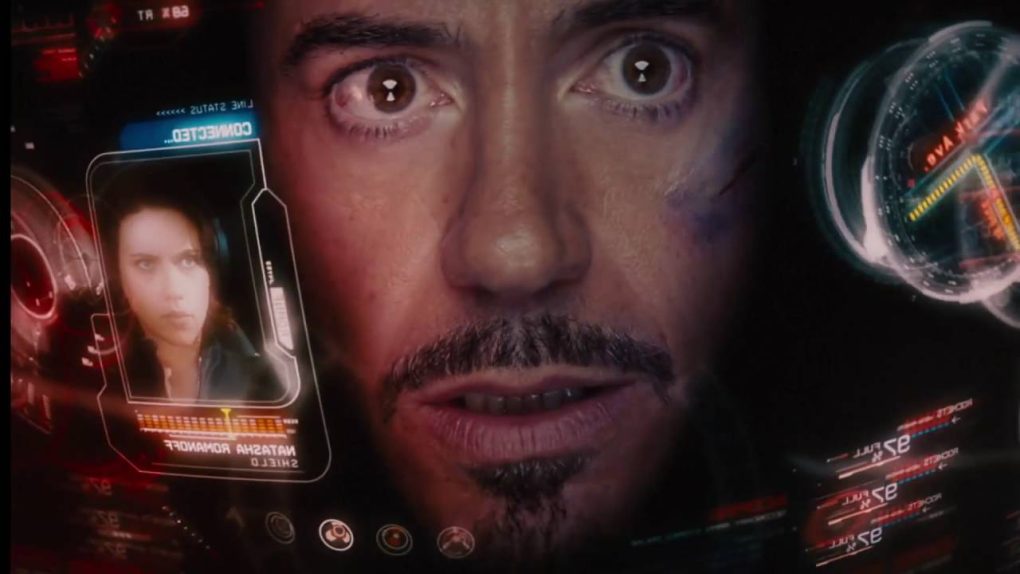Apple reinvented the phone in 2007, revolutionizing the entire mobile industry. To this day, there’s no device as influential as the iPhone. More than 10 years after Steve Jobs introduced the original model, Apple competitors still wait for Apple to steer the market, and then they blatantly copy the company’s designs. Samsung was the most notorious iPhone cloner in the world for a long time, and copying Apple was the best decision Samsung could have made. Now, just about every Android vendor on the planet steals Apple’s designs.
But it turns out that it’s not just Android phone companies that copy Apple. Tony Stark copied the iPhone too. You know, the fictional Marvel character who’s a brilliant, humorous, and somewhat courageous scientist. You might also know him as Iron Man.
Tony Stark is one of the great minds of the Marvel universe, a visionary the likes of Steve Jobs and Elon Musk, but with the actual ability to build his own hardware and software. He’s also an iPhone man.
Iron Man’s user interface is all based on the simplicity, intuitiveness, and user-friendliness of the iPhone. Funny enough, none of the Avengers really use iPhones. In fact, we’ve seen tons of mobile devices in the Marvel movies, real and fictional, made by various Apple competitors.
So how did Stark copy the iPhone? Getting back to the real world, an extremely insightful report from vfxblog tells us that the Iron Man’s HUD (head-up display) tech was conceptualized using the iPhone as inspiration:
Kent Seki (visualization/HUD effects supervisor, Pixel Liberation Front): There were many rules and driving philosophies we established along the way that led us to the final product. I remember in an early discussion in post-production with Jon Favreau. He pulled out his iPhone, which was a new thing at the time. He said, ‘I don’t want to tell you a specific graphic to make for the HUD, but I want it to feel intuitive like my iPhone.’
Dav Rauch (HUD design supervisor, The Orphanage): The iPhone had just come out like literally a week or two before the meeting with Jon – and I got an iPhone and Favreau had gotten an iPhone. When I was down there we kind of geeked out on our iPhones, and we were talking about what we liked about the iPhone because he was really inspired by it. He was like, ‘What I love about this thing is it just kind of does what it should do, and it kind of does what I want it to do and it’s very intuitive and it’s very simple.’ We opened it up and I was looking at the transitions in an iPhone. I’m like, ‘These transitions are so simple and they’re just like zooming transitions, or wipe transitions. There’s nothing fancy about this phone, but what’s fancy about this phone is that it works and it works really well.’
The HUD had two major purposes: to connect Robert Downey Junior’s character with the audience so that Iron Man would have an actual face, and to give life to JARVIS, the AI computer played by Paul Bettany that lacked a physical representation. And it turns out that it’s the chat above about the iPhone that altered the way the HUD was designed.
The article offers plenty of details on how the visual effects team and the director looked at this particular project. Like how Stark would design the interface:
Dav Rauch: We said, ‘If it doesn’t do something that would be real for somebody flying around in this suit then we are taking it out.’ Because we figured that Tony is an engineer, and he’s going to put stuff in there that works. That’s what engineers do, they make shit that works. And so everything has to have a purpose and everything has to work and if it doesn’t work then it’s out. That’s what we did and that’s when things really turned around.
And how Obadiah would steal it:
Kent Seki: We thought of it this way, Obadiah probably stole Tony’s underlying tech for the HUD, maybe the operating system, but not the UI that ran it. It, once again, reflected the different characters of Tony Stark and Obadiah Stane. Tony really was the master inventor who would, of course, create an elegant UI to drive the operating system of the HUD. Obadiah would not have the time, patience, or skill to create that UI and would settle for the most basic version.
Ultimately, it all worked out for Iron Man and the entire Marvel universe. The audience understood immediately how the HUD works and the purpose of those scenes. Interestingly, we might see some of that kind of Iron Man HUD technology hit Apple’s AR glasses at some point in the future.
In the meantime, you should totally check out the full vfxblog post at this link for complete Iron Man details, including video demos.








